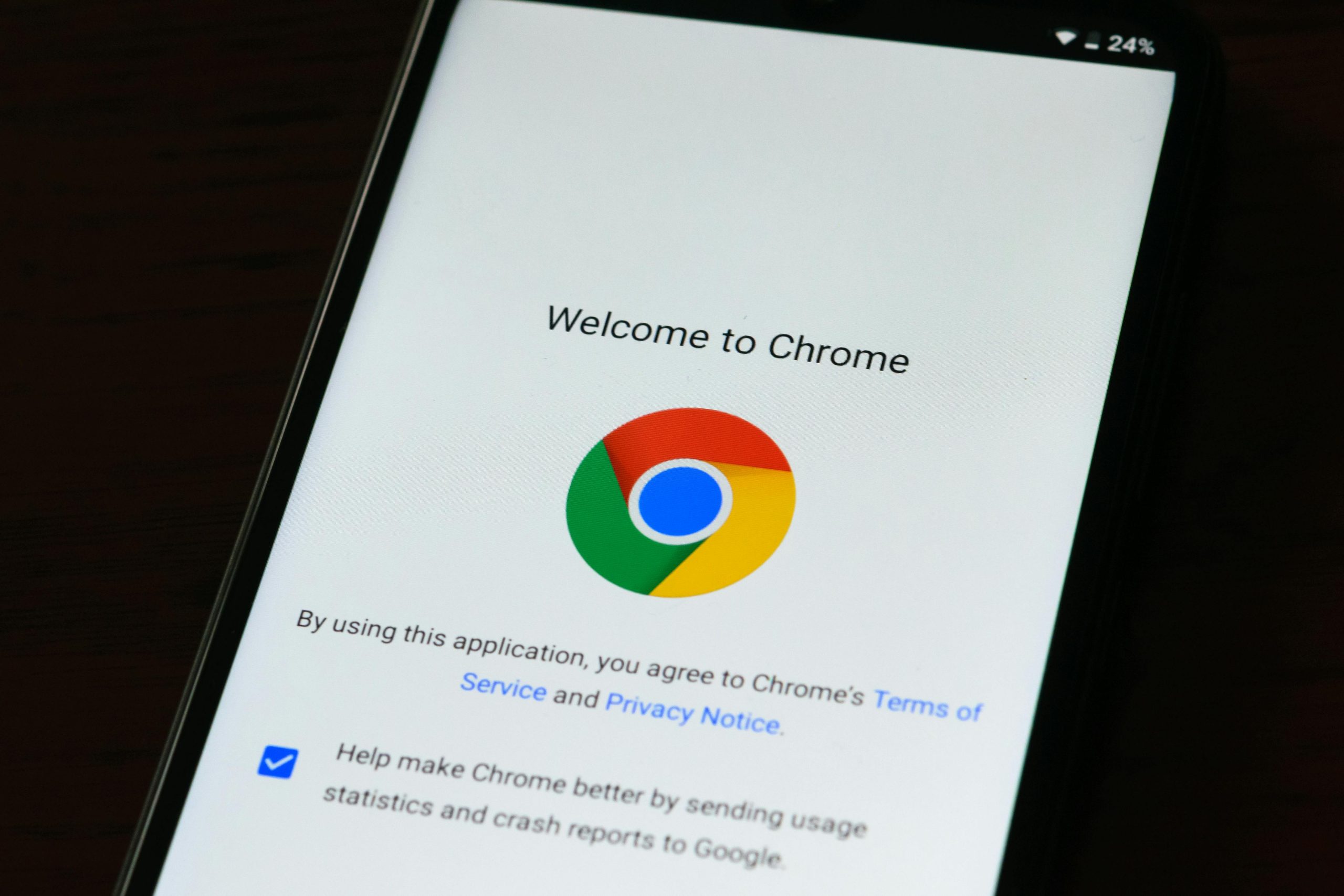
As you navigate the vast digital landscape of the internet, your trusty web browser serves as your faithful guide, leading you through the endless possibilities that lie just a click away. Among the myriad browsers available, Google Chrome stands out as a beacon of speed, security, and customization. But did you know that beneath its sleek surface lies a treasure trove of hidden features waiting to be unlocked? Enter Chrome flags – powerful settings that allow users to tweak and enhance their browsing experience in ways they never thought possible. In this article, we delve into the realm of Chrome flags to uncover the seven hidden gems that will revolutionize how you browse online. From boosting performance to improving privacy and everything in between, these flags are sure to take your Chrome experience to new heights. But beware – not all flags are created equal. Discover which two flags you should steer clear of at all costs to avoid potential pitfalls and ensure smooth sailing on the world wide web.
What are Chrome flags?
Chrome flags are experimental features and settings that allow users to customize their browsing experience. These flags can provide access to new functionalities or enable improvements in performance, security, and accessibility. By enabling certain Chrome flags, users have the opportunity to enhance their browser in unique ways that may not yet be mainstream.
However, caution is advised when messing with Chrome flags as they are not fully tested and could potentially cause instability or unexpected behavior. It’s essential to research each flag before enabling it and understand the potential risks involved in doing so. While experimenting with Chrome flags can be exciting, users should proceed with caution and be prepared to disable any flag causing issues.
Flags to use
1. Security Flags:
When browsing the web, security is a top priority for users. Chrome flags offer a range of security measures that can enhance your online experience. One crucial flag to enable is ‘Strict Site Isolation,’ which protects against various types of cyber attacks by isolating websites into separate processes. This enhances user privacy and prevents malicious websites from accessing sensitive information.
Another important security flag to consider enabling is ‘Safety Check.’ This feature ensures that your browser is up-to-date with the latest security fixes and scans for any harmful extensions or risky settings. By regularly running safety checks, users can stay one step ahead of potential threats and protect their personal information online. Additionally, enabling ‘Enhanced Safe Browsing’ provides an extra layer of protection by proactively warning users about potential phishing and malware sites before they visit them, helping to keep browsing sessions secure and hassle-free.
![]()
2. Customization Flags:
Customization Flags give users the power to tailor their browsing experience to suit their individual preferences. These hidden settings allow for a plethora of adjustments, from tweaking tab behavior to enhancing security features. By enabling customization flags, users can take control of their browser like never before, creating a personalized environment that optimizes productivity.
One notable customization flag is ‘Tab Groups’. This feature revolutionizes the way tabs are managed by allowing users to organize them into groups with custom labels and colors. This can significantly improve workflow efficiency and declutter the browsing experience. Additionally, flags like ‘Force Dark Mode’ offer a visually appealing option for those who prefer a darker interface while reducing strain on the eyes during nighttime browsing sessions. Customization Flags truly empower users to mold their browser into an extension of themselves, enriching the online experience in unique ways.
3. Productivity Flags:
Productivity Flags are essential for maximizing your efficiency while browsing the web. One such flag is ‘Tab Groups’, which allows you to better organize and manage multiple tabs, reducing clutter and streamlining your workflow. By enabling this feature, you can easily group related tabs together for a more focused browsing experience.
Another key productivity flag is ‘Smooth Scrolling’, which enhances the scrolling experience on Chrome by making it more fluid and responsive. This subtle adjustment can significantly improve your overall browsing comfort and reduce eye strain during prolonged surfing sessions. Embracing these Productivity Flags can transform how you interact with the web, boosting your effectiveness and enhancing your online experience.
4. Privacy Flags:
One of the most vital Chrome flags to enable focuses on privacy. By activating Privacy Flags, you gain control over crucial privacy settings within your browser. This flag helps prevent websites from accessing sensitive information without your consent, enhancing your online security and protecting your personal data.
Enabling Privacy Flags is essential for safeguarding your digital footprint and maintaining a secure browsing experience. With the rise of data breaches and online tracking, taking proactive steps to protect your privacy is paramount in today’s digital age. By enabling this flag, you empower yourself with an added layer of defense against potential threats and intrusions while navigating the web.

5. Fun Flags:
Fun Flags are a lesser-known but exciting feature of Google Chrome that allows users to personalize their browsing experience. From quirky animations to customizable themes, Fun Flags add a touch of whimsy to the otherwise mundane browser settings. One particularly delightful flag is the Tab Hover Cards which displays a preview when hovering over tabs, making multitasking more visually appealing.
Another interesting Fun Flag is Parallel Downloading, which splits large files into smaller chunks and downloads them simultaneously to speed up the process. This can be especially handy for those who frequently download large files and want to save time. Overall, enabling Fun Flags can not only make your Chrome browsing experience more enjoyable but also enhance productivity in subtle yet significant ways.
6. Compatibility Flags:
Compatibility Flags: These flags are designed to enhance the compatibility of Chrome with certain websites and applications, ensuring a smoother browsing experience for users. By enabling these flags, you can address issues such as rendering errors, outdated software conflicts, and other compatibility challenges that may arise when using Chrome. One particularly useful compatibility flag is the ‘Override software rendering list’ which allows Chrome to bypass the system’s software rendering list, potentially improving performance on systems with GPU-related issues.
Another noteworthy compatibility flag is ‘Ignore-gpu-blocklist,’ which ignores any blocklist entries related to the GPU in use. This can be beneficial for users who encounter unnecessary restrictions due to their GPU setup. Enabling compatibility flags can help users navigate around specific website problems or technical limitations that may otherwise hinder their browsing experience. It is worth exploring these flags to optimize your browser performance and ensure seamless functionality across various online platforms.
7. Experimental Flags:
Experimental flags within Chrome offer a gateway to cutting-edge features that may eventually become mainstream. While they come with the disclaimer of potential instability, for tech enthusiasts and early adopters, they provide an exciting peek into the future of browsing. These experimental flags can introduce new UI designs, browsing improvements, and enhanced security measures before anyone else gets a taste.
Enabling experimental flags in Chrome involves navigating to the chrome://flags page and toggling specific settings on. From enabling flagging systems for new tab manipulation to testing out advanced security protocols, these features cater to those looking to customize their browsing experience beyond the conventional options available in the standard settings menu. However, it’s crucial to proceed with caution as some experimental flags may not work as intended or could cause browser crashes – being prepared for hiccups along the way is all part of the thrill for early testers.

Flags to avoid
Avoid Renderer Code Integrity Flag:
When it comes to Chrome Flags, enabling the Renderer Code Integrity flag might seem like a security measure. However, this flag can sometimes cause compatibility issues with certain websites and extensions. By avoiding the Renderer Code Integrity flag, users can ensure a smoother browsing experience without sacrificing security.
One key aspect to consider is that newer versions of Chrome have built-in security features that make the Renderer Code Integrity flag less necessary. Additionally, disabling this flag can prevent potential conflicts that may arise when accessing web content or using browser extensions. Ultimately, prioritizing compatibility and performance over unnecessary security measures can lead to a more seamless browsing experience for users.
Avoid Password Import Flag:
When it comes to online security, Chrome flags play a crucial role in enhancing user experience and safety. One of the most debated flags is the Password Import flag, which allows users to import passwords from other browsers. While this feature can seem convenient, it also poses a significant security risk.
Enabling the Password Import flag increases vulnerability by centralizing all your passwords into one platform, making them more susceptible to potential breaches. Moreover, importing passwords from unsecured or outdated browsers can expose you to security threats. It’s essential to prioritize your online safety by manually entering passwords and using secure password managers instead of relying on the Password Import flag.
In conclusion, while the Password Import flag may provide convenience, it’s crucial to weigh the risks against its benefits. Prioritizing security over convenience when it comes to managing passwords will go a long way in safeguarding your sensitive information online.
Conclusion
In conclusion, while Chrome flags offer a way to customize your browsing experience and potentially enhance performance, it’s important to exercise caution. Enabling experimental features can sometimes lead to instability or security risks, so it’s crucial to weigh the benefits against the potential drawbacks. By selectively enabling only the most useful flags and staying informed about their functionality, users can optimize their browser experience without sacrificing stability.
Ultimately, the decision to enable specific Chrome flags should be based on individual needs and preferences. Experimenting with different flags can provide valuable insights into how browsers work and help users tailor their experience to suit their workflow. With a thoughtful approach and an understanding of the potential risks involved, users can leverage Chrome’s flexibility to create a more efficient and personalized browsing environment that meets their unique requirements.






